The London Library has been extending in higgledy-piggledy fashion ever since it moved to its St James’s home in 1845. Now Haworth Tompkins has set out to rationalise its circulation so that readers may actually be able to find the books they’re looking for
The sign above the polished wooden doors reads “The London Library”. It is the only clue as to what lies behind the neoclassical facade tucked into the north-west corner of London’s St James’s Square. The building’s lobby is only slightly more revealing: bookcases, alcoves, ornate columns and an assortment of ancient chairs and benches.
Pass through the lobby, however, and readers enter a maze of rooms, squeezed onto 10 floors, across seven different interlinked buildings and packed with more than 14 miles of shelves, that form the world’s largest independent lending library. Like the jumble of reception furniture, the mass of buildings and assorted extensions appear to have been assembled piecemeal over the past century and shoehorned into the void behind the entrance building. The resulting warren of corridors and passageways means that the library’s members rely on the three librarians that staff the lobby’s counter for directions and advice. Snatches of their hushed conversations can be heard as they check books in and out. Occasionally the librarians have to raise their voices to be heard above the sound of drilling emanating from behind a painted, temporary partition.
Step behind the partition and the library’s quiet scholarly ambiance disappears in a world of dust and plaster. Here, 12 operatives are all hard at work remodelling half of the reception under the second phase of architect Haworth Tompkins’ ambitious plan to transform the library. The scheme sets out to rationalise the building’s circulation, revamp many of the existing spaces and provide enhanced facilities for existing members as well as to attract new, younger ones to secure its financial future. In addition, the redevelopment will increase storage space by a third (the library’s collection grows by 8,000 volumes a year – or half a mile of shelving every three years) and improve the building services to help preserve the collection’s one million books.
Behind the partition, the workers have just two hours to complete their drilling and any other noisy aspects of their work before the site returns to silent mode. A key requirement of the brief was that the library must remain open throughout its £18m revamp to continue to generate revenue. As a result, construction noise is only permitted in two-hour bursts (8-10, 12-2 and 4-6). “The noise policy is policed by Mace,” says Altaf Abbas, Mace’s project manager for the scheme. But controlling site noise is just one of the challenges faced by Mace on this scheme.
On top of the noise constraints and having to work on a construction site surrounded by valuable books and their readers, the construction team has also had to contend with limited site access, negligible site storage, and a phased construction programme that has ensured the works keep moving through the labyrinth of buildings. And if that was not enough, the site was hemmed in by expensive residential apartments.
To understand the scale of the task Abbas has had to deal with, it helps to know a little of the history of this idiosyncratic building. The library was founded in 1841 by Thomas Carlyle after he developed an intense dislike for the British Museum’s system of having to request a book rather than the serendipity of being able to peruse the book shelves. The library moved to its current location in 1845. In 1898 a purpose-designed home was erected on the site which included the current entrance lobby, a reading room with three levels of cast iron book stacks above it and five additional levels to the rear. The building was extended in the twenties with the addition of a five-storey structure with more book stacks. In 1933 further expansion took place: a steel-framed building containing a double height reading room and another five levels of book stacks that could only be reached via the original 1890s building.
No new additions were made to the library for 60 years. Then in 1992, just when the readers were getting orientated, the 1933 extension was extended – this time five new floors of book stacks were built fronting Mason’s Yard at the rear of the original building. Three years later the Anstruther Wing was constructed; the addition meant the library now snaked the width of one whole block, through various buildings and extensions from St James’ Square in front to Duke Street at the rear.
There was a complete Rubik’s Cube of what to move and where; how to get goods in and how to get the workforce in and get rubble out
Graham Haworth, Haworth Tompkins
For visitors, the legacy of this piecemeal expansion is a warren of corridors and circulation routes, unaligned floor plates and poorly linked buildings. So when the library expanded further still with the purchase of TS Eliot House in June 2004, it used the opportunity to rationalise its layout and to bring its facilities up to date. It commissioned architect Haworth Tompkins to come up with a masterplan for the site. “It had silted up and we were brought in to unblock it,” says partner Graham Haworth.
Working with the library and construction team, Mace developed a sequence of work to implement the architect’s concept. “It was a balancing act between getting the construction works done quickly to keep costs to a minimum compared with the need not to disrupt the library,” says Abbas. The first phase of the project was to revamp TS Eliot House so that the library’s staff could be relocated to the newly acquired building. The space in the library freed by the move enabled the bookshelves to be shuffled to create just enough space for the contractors to start work on the second phase; it’s what Haworth terms “swing space”.
The second phase of works included the restoration of a lightwell and the installation of a glazed roof. Restoration of the original grand staircase has created what Haworth describes as a “ceremonial” route from the entrance hall to the first floor reading room and the original Victorian book stacks beyond. The works also included a further extension to the thirties building, refurbishment of the double height Art Room and the installation of a new staircase and lift through the heart of the building. Connections are punched through to TS Eliot house at every level to rationalise the building’s vertical circulation.
In addition, a new periodicals reading room was created in a lightwell. The final task in the second phase is to remodel the entrance lobby, which is under way at the moment (see figure 1, right: how the works are phased). There are also three additional phases of work planned for the future: phases 3, 4 and 5 will see the 1890s building extended upwards to accommodate another three storeys of book stacks, along with a new members lounge and reading room added on the library’s roof. “Within each phase there was a complete Rubik’s Cube of what to move and where; how to get goods in; how to get the workforce in and get rubble out,” says Haworth.
Work started in April 2008. First on site was Mace’s Altaf Abbas. Even though Mace had been involved with the project as adviser on buildability and site logistics from the outset, Abbas’ first task was to try to understand the spatial relationship between the library’s various buildings. “I spent the first two weeks just walking around the library to familiarise myself with the buildings,” he says.
From the beginning site logistics were a major challenge. “It was obvious from the outset that we wouldn’t be able to use a tower crane on this project, so managing logistics and site access would be critical to the scheme’s success,” Abbas explains. It was a task made all the more difficult because access to the site from Mason’s Yard at the rear of the library was through a small archway with restricted headroom. There was also no site storage, so goods had to be delivered on a just-in-time basis. Added to this was the difficulty of feeding plant and materials through the library’s maze of corridors and circulation spaces. “It was soon apparent that everything would have to be designed to be broken down and delivered to site in small sections through the site entrance and then manhandled into position,” Abbas explains.
The constraints imposed by this difficult site dictated the way the works were designed. With its intimate knowledge of the building, Mace had to work closely with the design team to ensure its designs could be built. “Don’t make it too long and don’t make it too heavy or we won’t be able to manhandle it into position,” was Abbas’ mantra.
It was a balancing act between getting the works done quickly to keep costs to a minimum compared to the need not to disrupt the library
Altaf Abbas, Mace
He says that in the instances where it was not possible to break components down, the challenge was to work out a route through the building to get components to the site. Abbas explains: “With the 6m-long beams, we had to come up with a way of forming structural openings so that you could get the beam in and lifted into place.”
CDM and method statements were crucial, and the design team’s work was also vetted by Mace before being issued to the trade contractors.
The nature of the project meant works packages had to be let on an individual basis, with each package tendered. In some areas the full extent of the works would not be revealed until the strip-out revealed what lay beneath.
The works carried out under the second phase were the most disruptive. “We were taking out the core of the building and rebuilding it,” says Haworth. He says the team spent almost three months planning how to do this because they had to reconcile the construction works with the library’s requirements. “We produced a ‘story board’ to demonstrate to the library on a simple scale what the contractor’s requirements were stage by stage and day by day,” says Abbas. This had the advantage that it allowed the library to programme how it was going to move its book collection to accommodate the works.
On top of the noise and logistics challenge the construction manager also had to deal with asbestos. It meant the programme had to be reshuffled to facilitate asbestos strip-out to keep the works on programme.
Given all the challenges of this project, it is a tribute to the construction team that it is still on budget and programme, although Abbas admits he has had to do some tricky value engineering to keep costs in check as the project has evolved. With the masterplan just over half way to completion, the most disruptive part of the works is now complete and Abbas appears to be looking forward to tackling the remaining three phases, which can all be tackled from outside, when they commence in 18 months’ time.
A quick tour of the library shows just how successful the architect’s plan had been. Circulation appears to be much improved and there is now a semblance of continuity and connectivity between spaces. By removing some of the less sympathetic additions that have appeared over time and by subtly remodelling areas using materials in sympathy with what is already there, Haworth Tompkins has succeeded in creating some fabulous new spaces and allowed light to penetrate deep into the heart of the building. Where the design has been most successful is that it has ensured the library retains much of its original idiosyncrasies, a fact demonstrated by this journalist’s inability to find his way, unaccompanied, back to the entrance lobby.
Downloads
Phases 1 & 2
Other, Size 0 kbPhase 2 (cont.)
Other, Size 0 kbPhases 3, 4 & 5
Other, Size 0 kb





















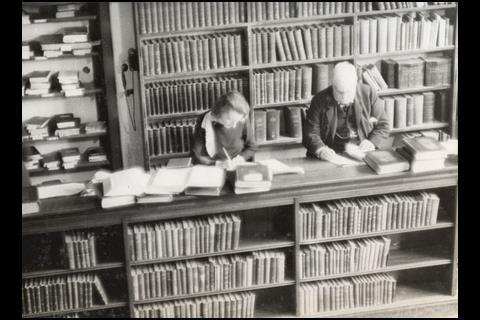
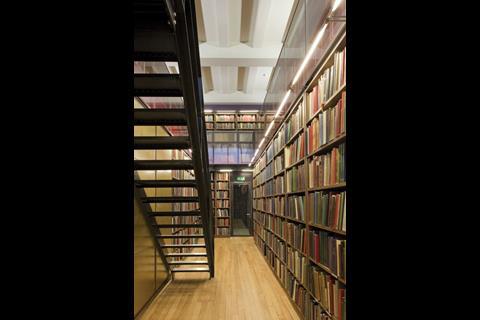
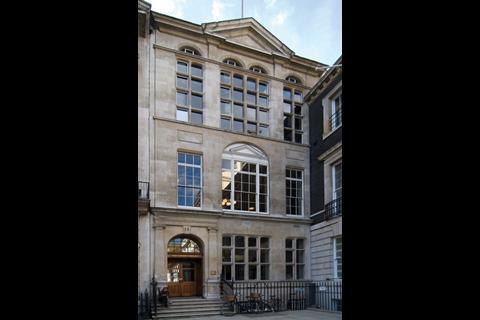

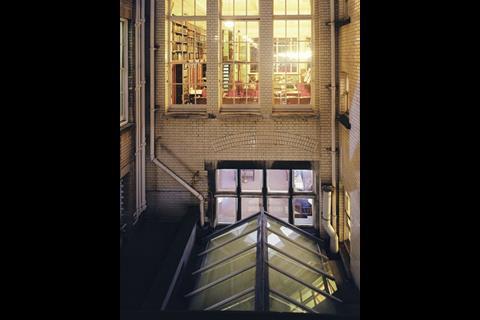
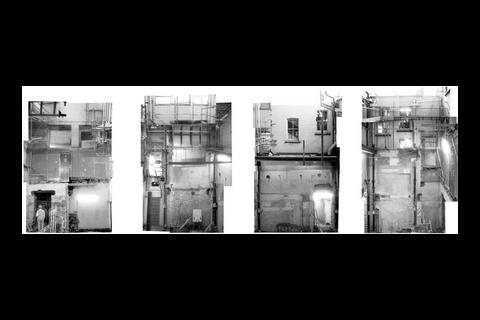








No comments yet